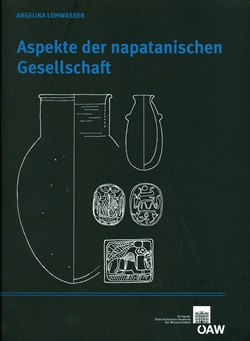Der Friedhof von Sanam im Nordsudan, der in das 8.-7. Jh. v. Chr.
zu datieren ist, wurde 1911/12 von
Francis Ll. Griffith ausgegraben und
1923 nur in einem zusammenfassenden Vorbericht publiziert. Die
Dokumentation ist jedoch noch am
Griffith-Institute, Oxford, vorhanden
und konnte dort digital aufgenommen
werden. Sie ist zur Gänze im Anhang
wiedergegeben. Es wurde versucht,
das Gewirr von Angaben zu Gräbern, bestattungen und Funden zu ordnen und den Friedhof von Sanam in seiner Struktur
zu erfassen. Da bisher keine zusammenfassende bearbeitung
des funerären Materials der napatanischen periode vorliegt,
soll diese Untersuchung als Referenz zur funerären Kultur
dieser Zeit dienen können. Im interpretierenden Teil wurde
ein chronologisches Gerüst errichtet, ebenso die topographische Situation erfasst und zu dem Altertümerplatz Sanam
in Beziehung gesetzt. Darüber hinaus ist die hierarchische
Gliederung von Bestattungen strukturell erfasst worden. Im
Zusammenhang mit der Frage nach Ethnizität und kultureller
Zugehörigkeit wurden einzelne Merkmale identifiziert, anhand
deren man das Wirken von unterschiedlichen Einflüssen
(Tradition, Ägyptisches, indigene Adaption und Innovation)
feststellen kann. Auch die individuelle Ebene wurde erfasst,
um zu zeigen, dass Merkmalskombinationen, denen wir im
archäologischen Kontext gegenüberstehen, Ergebnisse eines
individuellen Auswahlprozesses sein können. Aus der Masse
der 1619 Gräber und 1560 dokumentierten bestattungen wird
bis zum Individuum vorgedrungen, um zuletzt wieder die
Fäden zusammenzuziehen und das Netz der napatanischen
Gesellschaft, wie sie uns in Sanam entgegentritt, zu
knüpfen. Das Ergebnis spiegelt dabei den Handlungsrahmen wider, den die Gesellschaft im Ganzen und die
personen im Einzelnen hatten.
…
The cemetery of Sanam is located in northern Sudan and
dates to the 8th and 7th century bC. It was excavated in
1911/12 by Francis Ll. Griffith. In 1923 a short preliminary
report came out, which until now was the only publication
on the findings. The excavation records are still held,
however, in the Griffith Institute at the University of
oxford and they have now been digitized. The purpose
of this study has been to organize the huge amount of
data about the graves, burials and findings at the Sanam
cemetery in order to better understand its basic structure.
until now, nothing has been published on Napatan burial
customs, and thus, this study will be a reference work
for further research into the funerary culture of this
period. The book concludes with an analysis of the data
that is presented, including a chronological outline and
a description of the region's topography in relation to
Sanam. The hierarchical structure of burials has also
been examined. With regard to ethnicity and cultural
links, distinctive characteristics could be distinguished
that reveal various influences (traditional, Egyptian,
indigenous adaptations and innovations). Another aim of
this study was to provide a focused analysis of individual
persons. From the archaeological context it was possible
to show that certain combinations of features may have
been the result of personal choices. of 1619 tombs and
1560 documentable internments preserved in Sanam, it
was possible for the study to determine aspects applying
to individual people. In turn, it was possible to link these
results to create a picture of Napatan society as well as a
framework of the social interactions of particular people,
both in the society as a whole and individually.



 Home
Home
 Print
Print
 References
References
 Share
Share